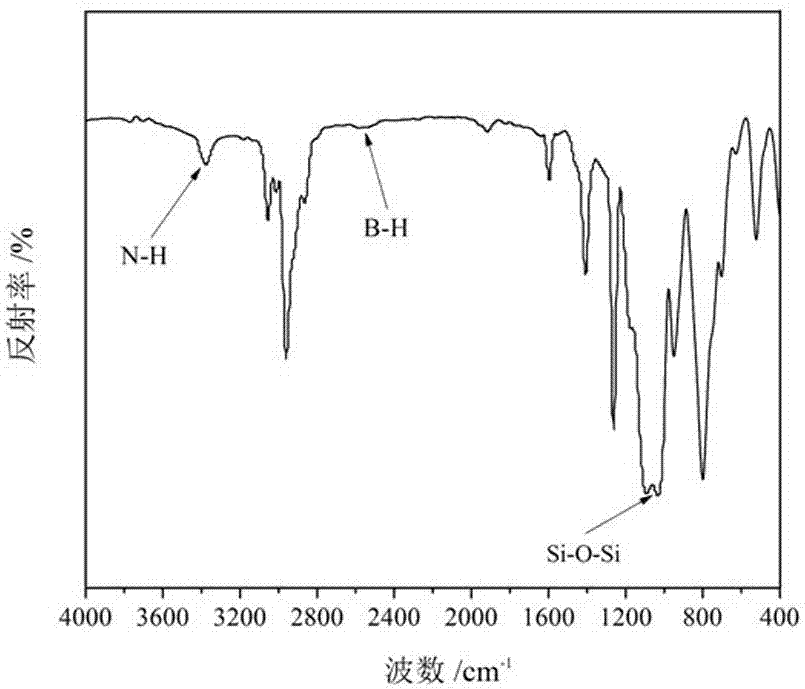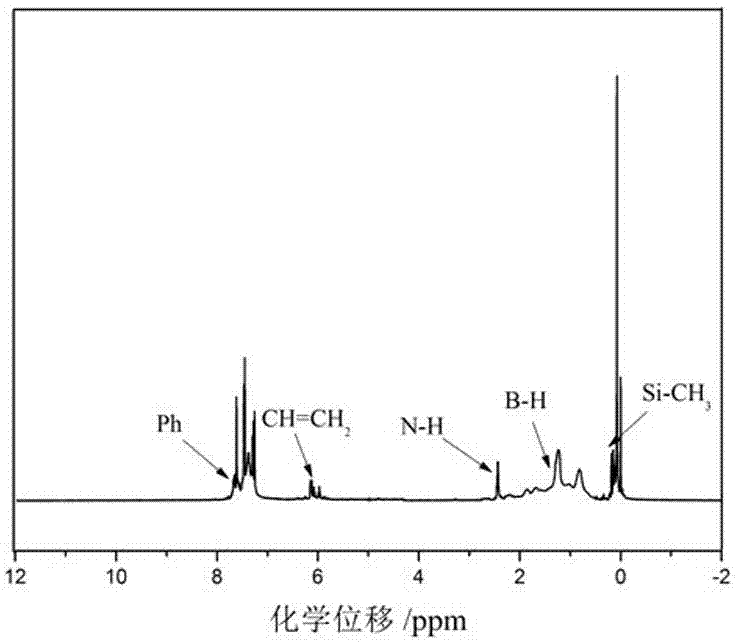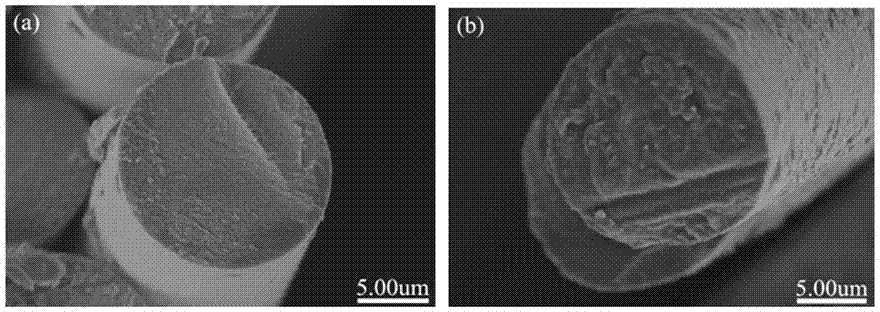Carborane ceramic precursor system and preparation method and application thereof
A ceramic precursor, carborane technology, applied in the fields of carbon fiber, textile and papermaking, fiber processing, etc., can solve the problems of poor operability, difficult industrialization, and highly toxic intermediate organoborane.
- Summary
- Abstract
- Description
- Claims
- Application Information
AI Technical Summary
Problems solved by technology
Method used
Image
Examples
Embodiment 1
[0093] 1. Synthesis of 1,1′-bisphenylsilyl-2,2′-bis(dimethylhydroxysilyl)biscarborane
[0094]Add 135 grams of dehydrated tetrahydrofuran and 13.2 grams of diphenyldichlorosilane into a 1000ml three-necked flask. After setting up the experimental device, first pass nitrogen to remove the air in the device, and then drop 25 grams of diphenyl dichlorosilane through a constant pressure dropping funnel. Ethynylmagnesium bromide Grignard reagent, the dropping time is 30 minutes, the setting reaction temperature is 40°C, and the reaction time is 4 hours. At the same time, a mixed solution of 6.2 grams of decaborane, 78 grams of acetonitrile and 178 grams of tetrahydrofuran is prepared, and reaction 4 Hours later, it was also added dropwise through a constant pressure dropping funnel, and the dropwise addition time was 30 minutes. After the dropwise addition, the reaction temperature was adjusted to 80° C., and the reaction time was 48 hours. After the reaction is finished, add a pr...
Embodiment 2
[0119] 1. Synthesis of 1,1′-bisphenylsilyl-2,2′-bis(dimethylhydroxysilyl)biscarborane
[0120] Add 135 grams of dehydrated tetrahydrofuran and 13.2 grams of diphenyldichlorosilane into a 1000ml three-necked flask. After setting up the experimental device, first pass nitrogen to remove the air in the device, and then drop 25 grams of diphenyl dichlorosilane through a constant pressure dropping funnel. Ethynylmagnesium bromide Grignard reagent, the dropping time is 30 minutes, the setting reaction temperature is 40°C, and the reaction time is 4 hours, simultaneously configure 6.2 grams of decaborane, a mixed solution of 78 grams of acetonitrile and 178 grams of tetrahydrofuran, react After 4 hours, it was also added dropwise through a constant pressure dropping funnel, and the dropwise addition time was 30 minutes. After the dropwise addition, the reaction temperature was adjusted to 86° C., and the reaction time was 48 hours. After the reaction is finished, add a prepared mixe...
Embodiment 3
[0137] 1. Synthesis of 1,1′-bisphenylsilyl-2,2′-bis(dimethylhydroxysilyl)biscarborane
[0138] Add 135 grams of dehydrated tetrahydrofuran and 13.2 grams of diphenyldichlorosilane into a 1000ml three-necked flask. After setting up the experimental device, first pass nitrogen to remove the air in the device, and then drop 25 grams of diphenyl dichlorosilane through a constant pressure dropping funnel. Ethynylmagnesium bromide Grignard reagent, the dropping time is 30 minutes, the setting reaction temperature is 40°C, and the reaction time is 4 hours, simultaneously configure 6.2 grams of decaborane, a mixed solution of 78 grams of acetonitrile and 178 grams of tetrahydrofuran, react After 4 hours, it was also added dropwise through a constant pressure dropping funnel, and the dropwise addition time was 30 minutes. After the dropwise addition, the reaction temperature was adjusted to 80° C., and the reaction time was 48 hours. After the reaction is finished, add a prepared mixe...
PUM
| Property | Measurement | Unit |
|---|---|---|
| Tensile strength | aaaaa | aaaaa |
| Tensile strength | aaaaa | aaaaa |
| Tensile strength | aaaaa | aaaaa |
Abstract
Description
Claims
Application Information
 Login to View More
Login to View More - R&D
- Intellectual Property
- Life Sciences
- Materials
- Tech Scout
- Unparalleled Data Quality
- Higher Quality Content
- 60% Fewer Hallucinations
Browse by: Latest US Patents, China's latest patents, Technical Efficacy Thesaurus, Application Domain, Technology Topic, Popular Technical Reports.
© 2025 PatSnap. All rights reserved.Legal|Privacy policy|Modern Slavery Act Transparency Statement|Sitemap|About US| Contact US: help@patsnap.com



